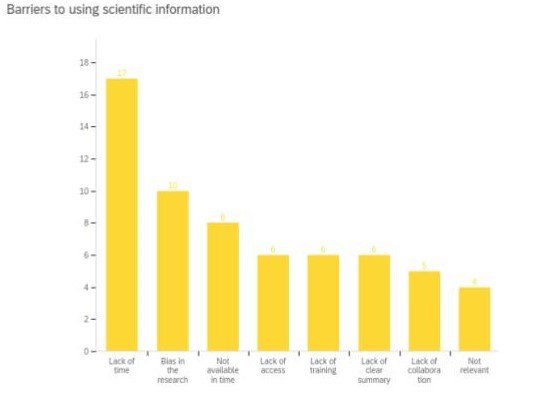A Case for Science Advising for State Governments
During my PhD research and while serving as the Executive Director of MOST Policy Initiative in Missouri, I have grown a deep appreciation for the role that state and local governments play related to science and technology topics. From COVID-19 to climate change, states and regions face unique challenges and require unique policy solutions, but also have unique challenges when it comes to getting science into policy conversations. Further, state governments possess ample jurisdiction to make decisions on these topics outside of the role the federal government plays.
The scientific community frequently engages in policy conversations in Washington, DC, but rarely are there collective efforts to inform policy discussions with science at the state-level. Governments in each of the fifty states vary greatly, and for scientists and scientific organizations, several barriers exist that complicate potential advising efforts. For instance, an approach that works to share science in one state may hinder efforts to share science in another state, depending on political dynamics, the reputation of local organizations, or public perceptions.
In 2020, we asked Missouri’s state lawmakers about the barriers that prevent them from using scientific information or research when making decisions, and their top responses were a lack of time and perceived bias in the research (Figure 1). As scientists and engineers, we are typically told that the greatest barrier for sharing science with policymakers is that we don’t communicate well, but state lawmakers seem to disagree. In order to more effectively work with state and local policymakers, we need to communicate well, but also communicate to the right people at the right time and in a manner that helps them trust the science. That’s a tall task.
Figure 1: Results of a survey to Missouri state lawmakers in December 2020. Survey respondents were composed of Republicans and Democrats.
State government decisions are consequential and significant to people who live in that state. Thus, the aforementioned barriers highlight the need for boundary spanning organizations to act as a bridge between the scientific and policy communities at the state level. Fortunately, there are several different organizations and programs that act as science advisors at the state-level, creating opportunities for evidence-informed decision making to occur.
State Academies of Science: The National Academies of Science, Engineering, and Medicine were chartered by the U.S. government to act as a science advisory body for the country. While most states have an academy of science at the state-level, few academies function similarly to the national academies by providing reports that inform policy decisions and other rulemaking. However, the Connecticut Academy of Science and Engineering and the Washington Academy of Sciences serve this role in their states.
Local Universities: Academic institutions have expansive statewide ties, including a political network that may provide evidence to legislators and other state government entities. This may include centers dedicated to particular types of research or individual laboratories or PIs working to communicate their findings. Scientists at these institutions often already have connections in the state legislature and although there is variance within states as to the financial structure, the research connection is a constant and many science professionals may serve as expert testimony and to provide reports on areas of scientific inquiry relevant to the policy process.
Nonprofits and Professional Societies: Many non-profits and professional societies have been changing their approach to advocacy from a primary focus on national interventions to a multilevel approach, which includes state-level advocacy. One example is the American Association for the Advancement of Science’s Local Science Engagement Network with pilots launched in Missouri, Colorado, and Georgia.
State Science & Technology Policy Fellows Programs: Several states have launched state-level science policy fellowship programs in a variety of formats, including full- and part-time fellows, placements in the legislative and executive branches, and with pre- and post-doctoral fellows. Fellows programs act as a transitional career opportunity for scientists, engineers, and health professionals interested in policy careers, and provide valuable scientific resources to state policymakers.
Future Directions
The science policy community often focuses on research funding advocacy in Washington, but there are so many other opportunities for the scientific and policy communities to interact. The Federation of American Scientists is currently encouraging more scientists and engineers to take part in federal congressional hearings to inform policy with science, shifting the focus to ‘science for policy’ rather than ‘policy for science’. At the state- and local-levels, boundary spanning organizations, such as the Institute for Science & Policy at the Denver Museum of Nature and Science, are working to understand and overcome political dynamics and barriers to be sure that policymakers can access scientific information when making decisions. Organizations that serve in a role between scientists and policymakers must begin to highlight these opportunities for scientists and engineers to engage with policymakers outside of federal advocacy.

